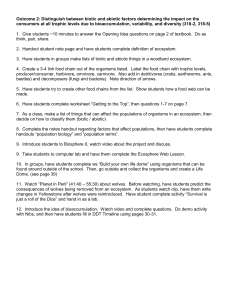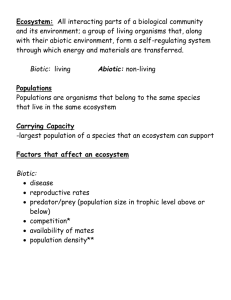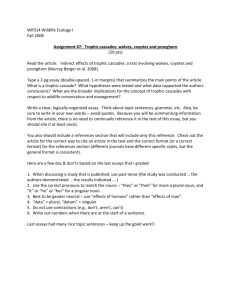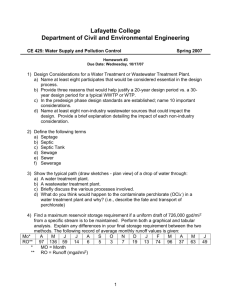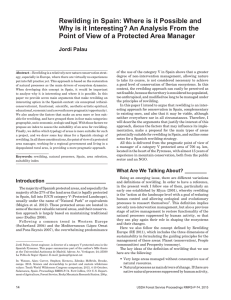Chapter 11: Wolves Test bank questions Multiple Choice The
advertisement
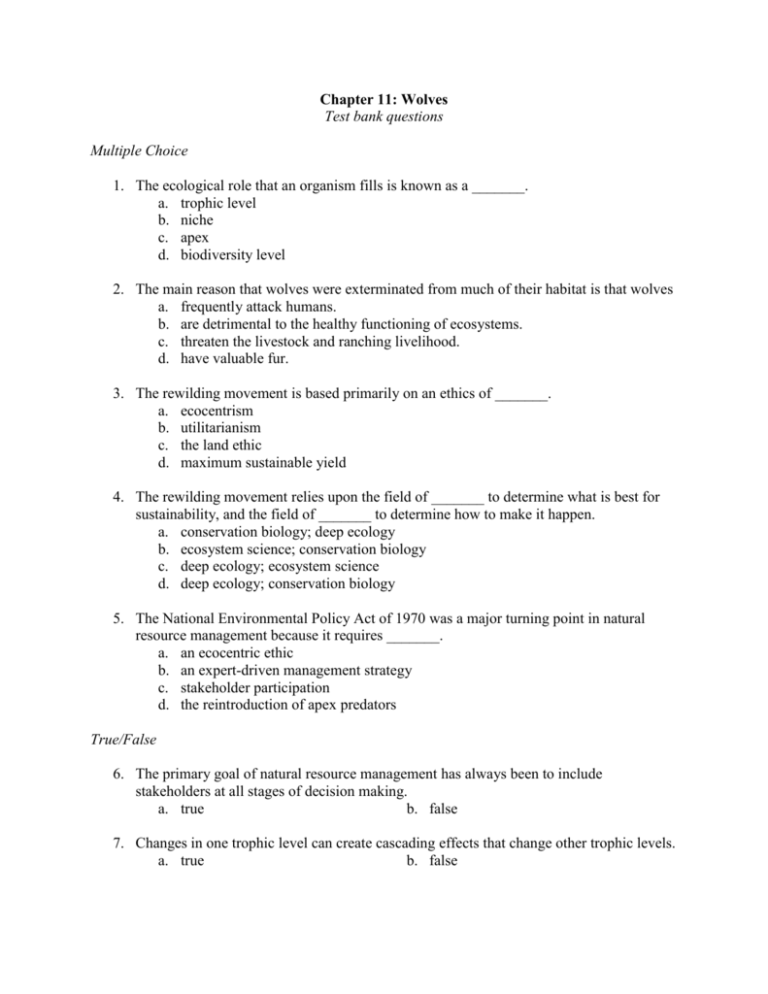
Chapter 11: Wolves Test bank questions Multiple Choice 1. The ecological role that an organism fills is known as a _______. a. trophic level b. niche c. apex d. biodiversity level 2. The main reason that wolves were exterminated from much of their habitat is that wolves a. frequently attack humans. b. are detrimental to the healthy functioning of ecosystems. c. threaten the livestock and ranching livelihood. d. have valuable fur. 3. The rewilding movement is based primarily on an ethics of _______. a. ecocentrism b. utilitarianism c. the land ethic d. maximum sustainable yield 4. The rewilding movement relies upon the field of _______ to determine what is best for sustainability, and the field of _______ to determine how to make it happen. a. conservation biology; deep ecology b. ecosystem science; conservation biology c. deep ecology; ecosystem science d. deep ecology; conservation biology 5. The National Environmental Policy Act of 1970 was a major turning point in natural resource management because it requires _______. a. an ecocentric ethic b. an expert-driven management strategy c. stakeholder participation d. the reintroduction of apex predators True/False 6. The primary goal of natural resource management has always been to include stakeholders at all stages of decision making. a. true b. false 7. Changes in one trophic level can create cascading effects that change other trophic levels. a. true b. false 8. Areas designated as wilderness are accessible equally by everyone. a. true b. false 9. The current extinction crisis is primarily caused by natural factors. a. true b. false 10. The goal of rewilding programs is to promote biodiversity and ecosystem functioning. a. true b. false Identification Keywords: anthropocentrism, apex predators, background extinction rate, biodiversity, conservation biology, ecocentrism, ethics/ethical, extinction crisis, masculinity, maximum sustainable yield, natural resource management, NEPA, niche, rewilding, stakeholders, sustainability, trophic levels People: Concepts: Convention on International Trade in Endangered Species (CITES), Endangered Species Act (ESA) Short Answer How has the social construction of wolves affected how they have been treated in North America? In your answer, you should 1) identify at least two ways that wolves have been socially constructed, and 2) describe how that construction has facilitated either the elimination or the reintroduction of wolves in North America. How do wolves contribute to biodiversity and healthy ecosystem functioning? In your answer, you should describe the processes that link wolves and other species. Use key terms such as apex predator, trophic level, and niche. What are some of the benefits of stakeholder participation in natural resource management, and what are some of the limitations? In your answer, you should 1) describe the reasoning behind the use of stakeholder participation in natural resource management, 2) describe the problems that limit the effectiveness of stakeholder participation, and 3) use the example of wolf management to support your assessment.

